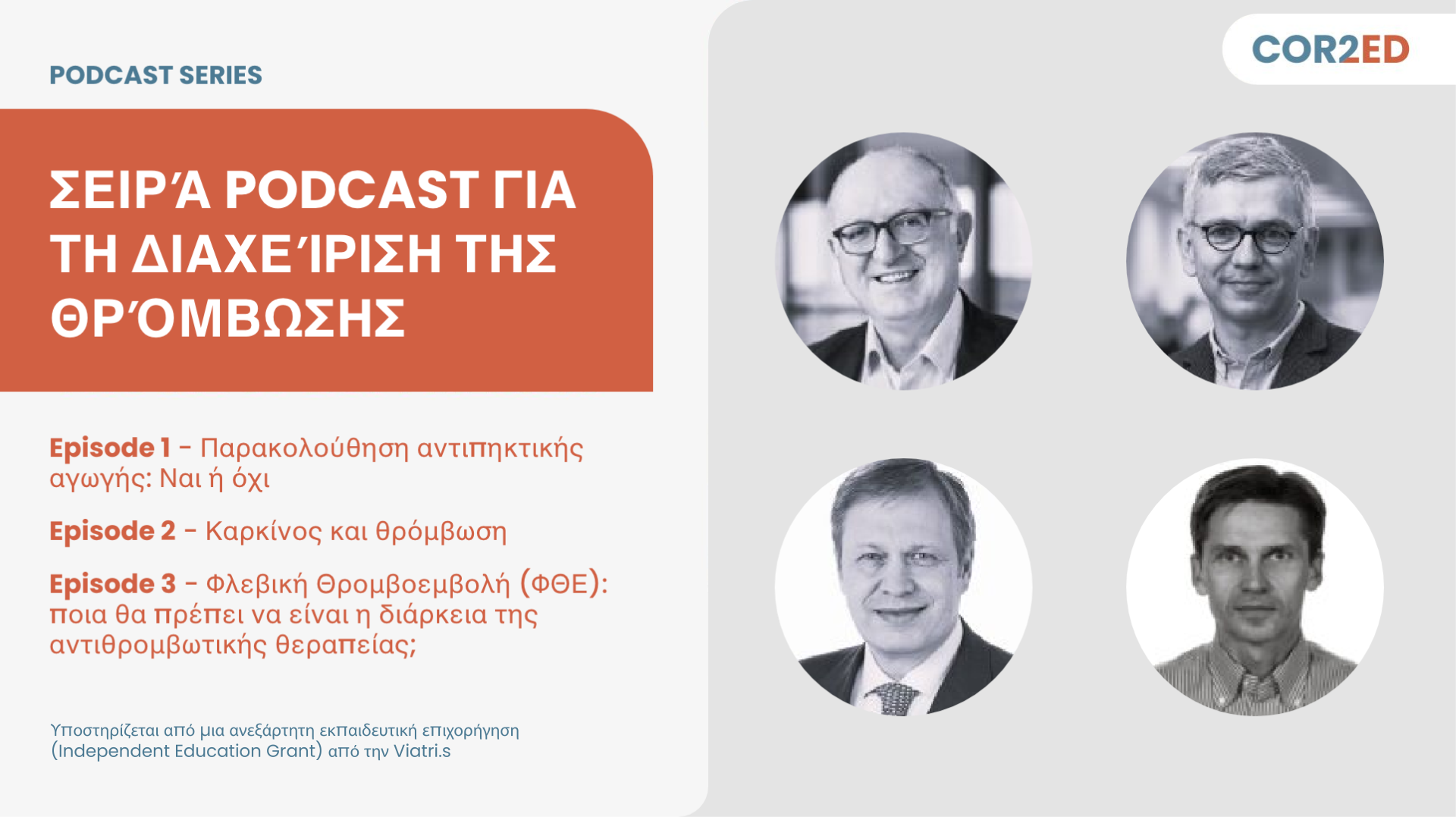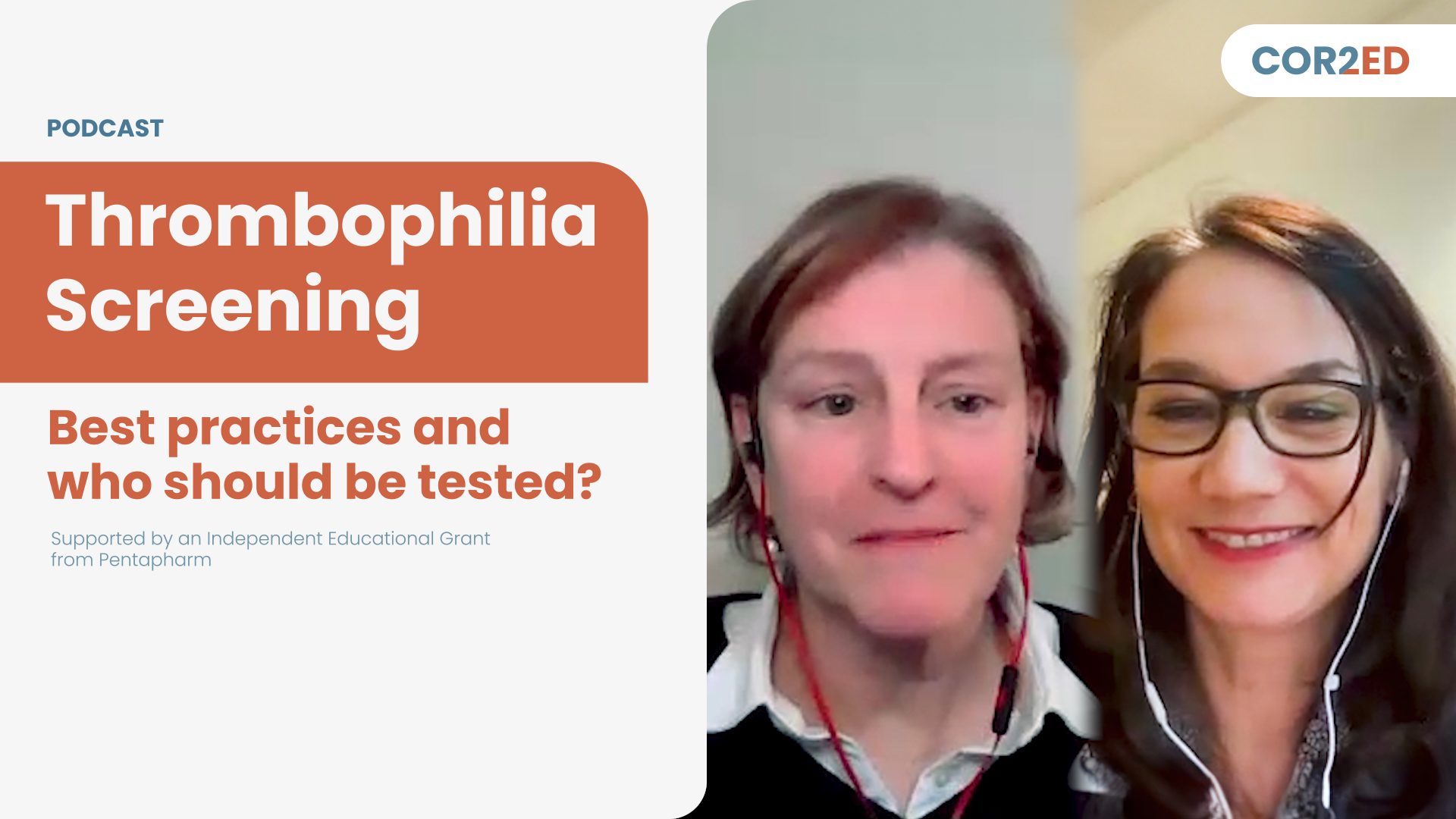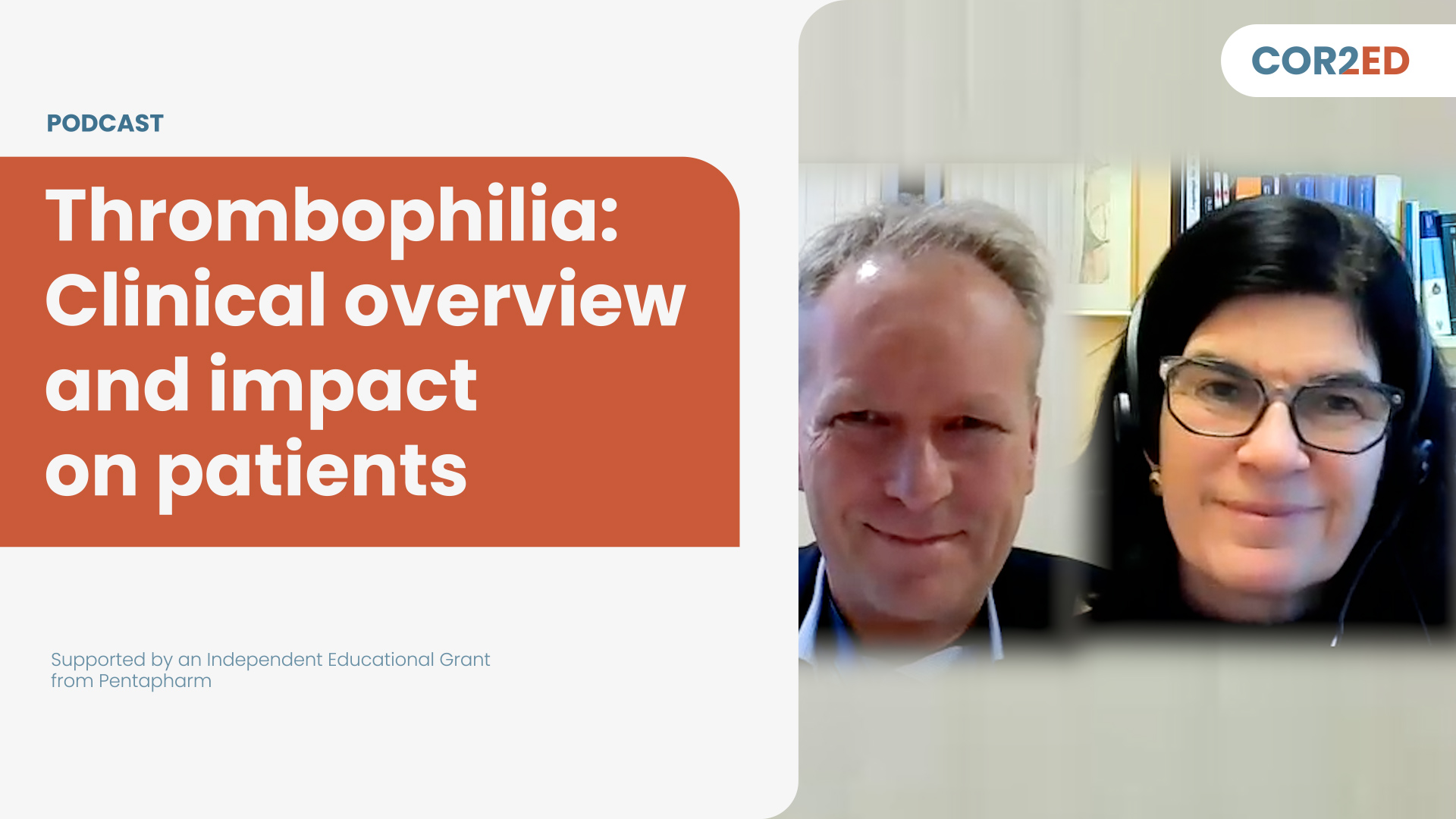In this final episode in a 4-part series on thrombosis in different clinical situations, medical experts discuss the current approaches to perioperative thromboprophylaxis. They explore the pathophysiology of perioperative thrombosis, special considerations, and how to apply perioperative thromboprophylaxis in practice, including thrombotic and bleeding risk stratification, choosing an anticoagulant, and the ideal duration of postoperative thromboprophylaxis.
E-learning
After listening to the podcast series, take the e-learning assessment to test your knowledge and earn CME credits.
Clinical Takeaways
- Thrombotic risk is a constant threat in postoperative patients but has decreased with the evolution of surgical technology
- A shift from low molecular weight heparins (LMWHs) to direct oral anticoagulants (DOACs) and from short to longer duration has been established in the guidelines in the last few years
- In major orthopedic surgery, aspirin 100mg/d can be used as an alternative if there is a low risk of VTE and if DOACs are not applicable or in cases of high risk for bleeding
- Thromboembolic complications should still be considered since they may affect morbidity and mortality after surgery




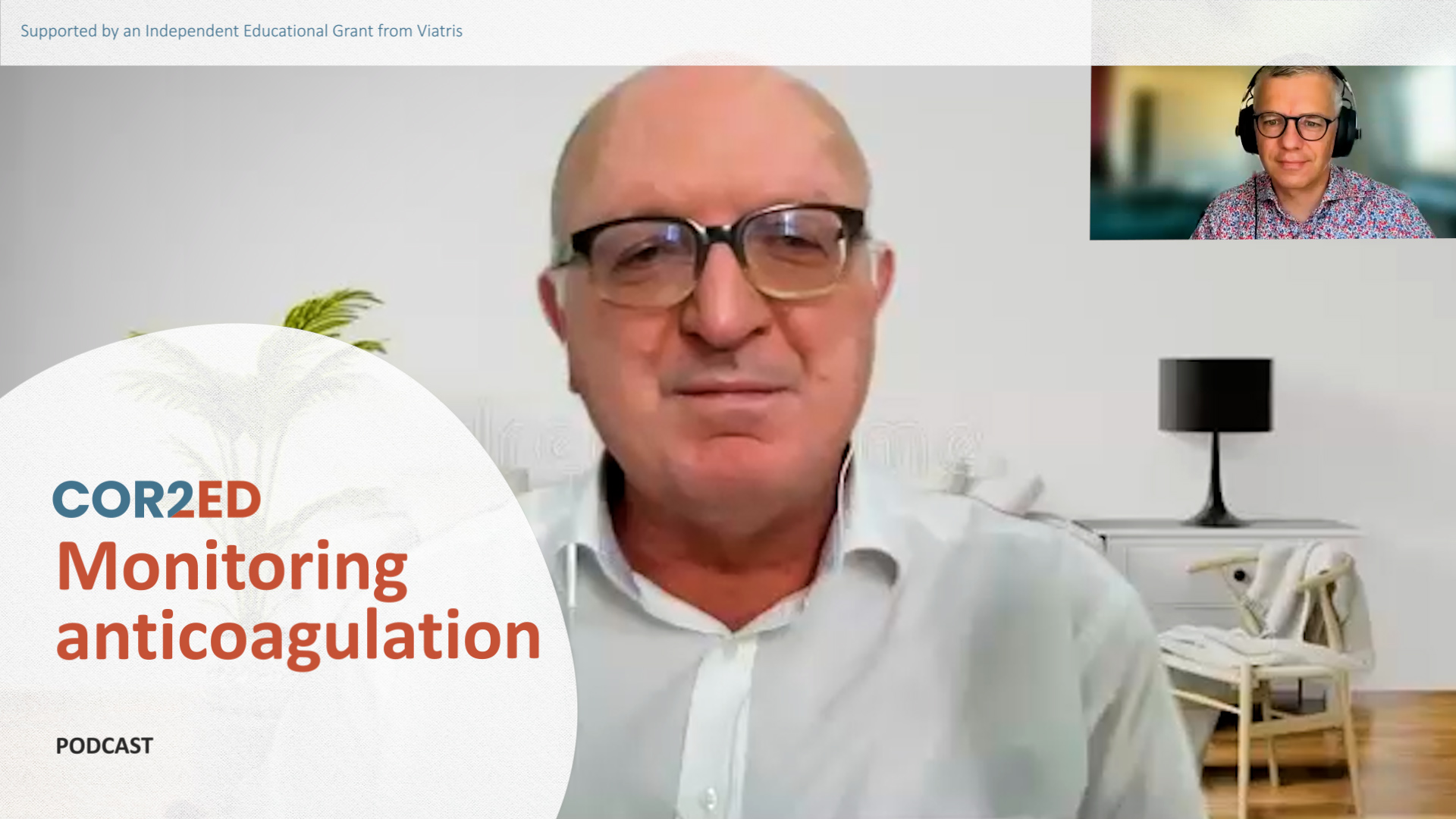
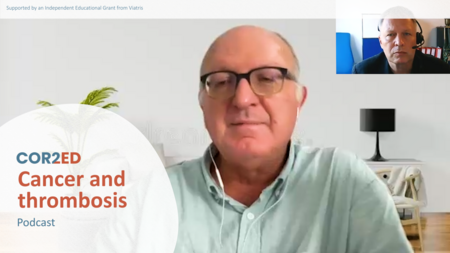

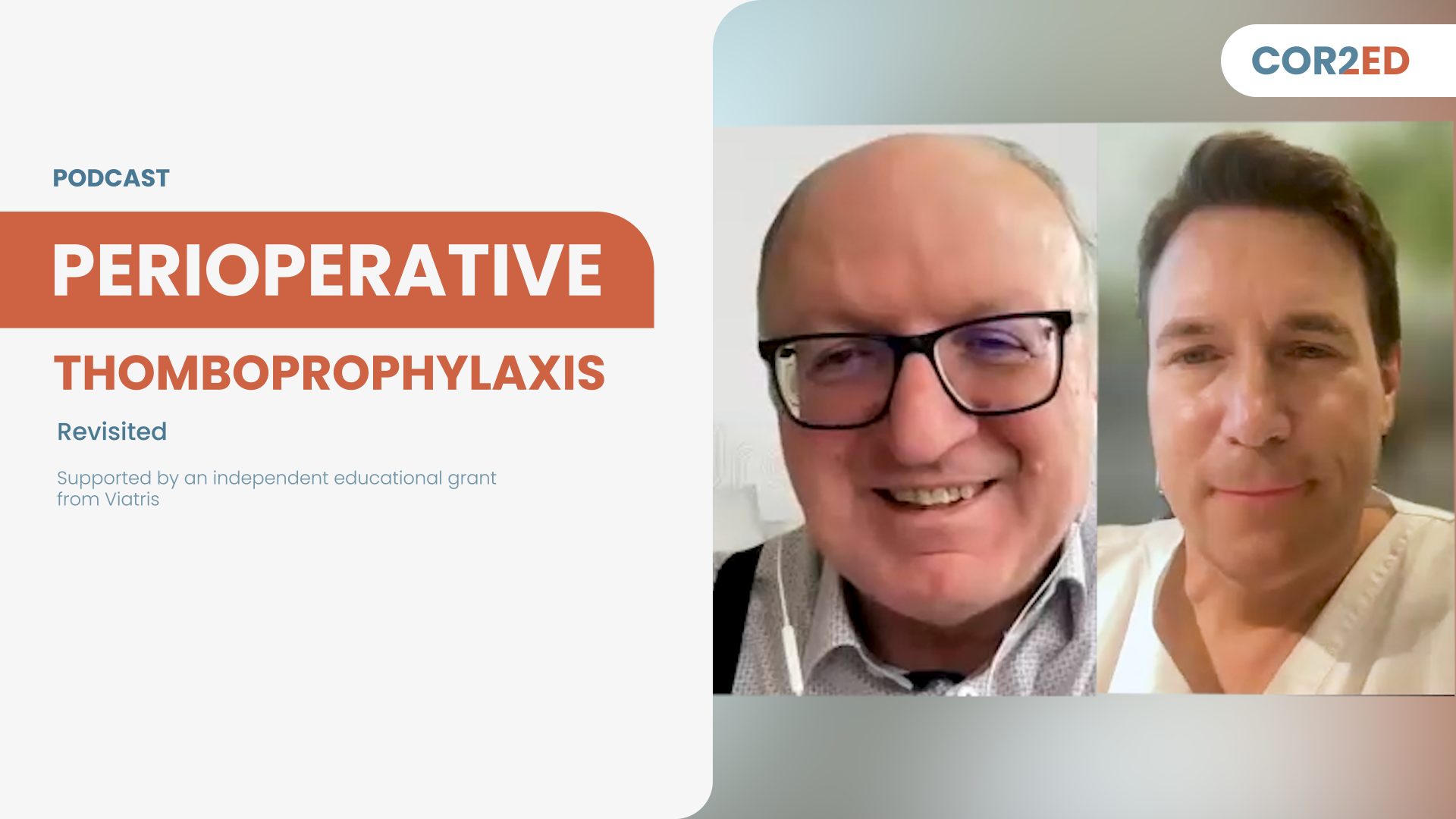
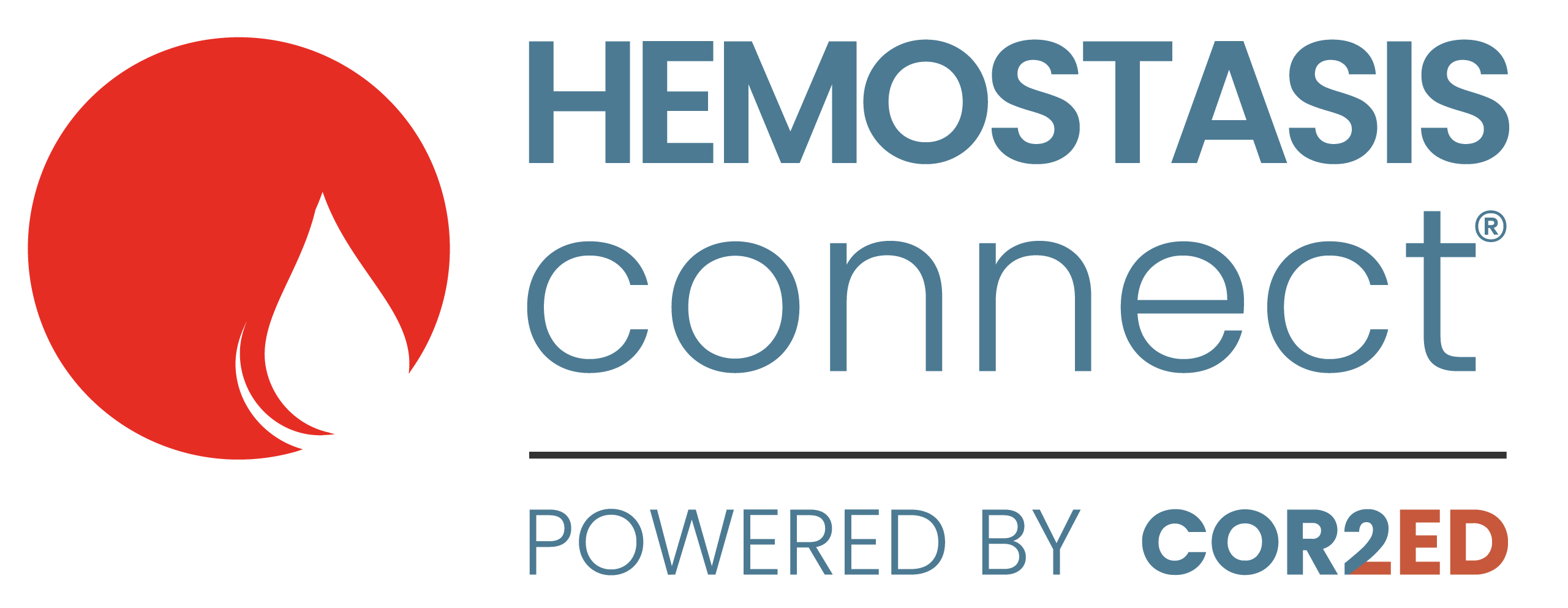

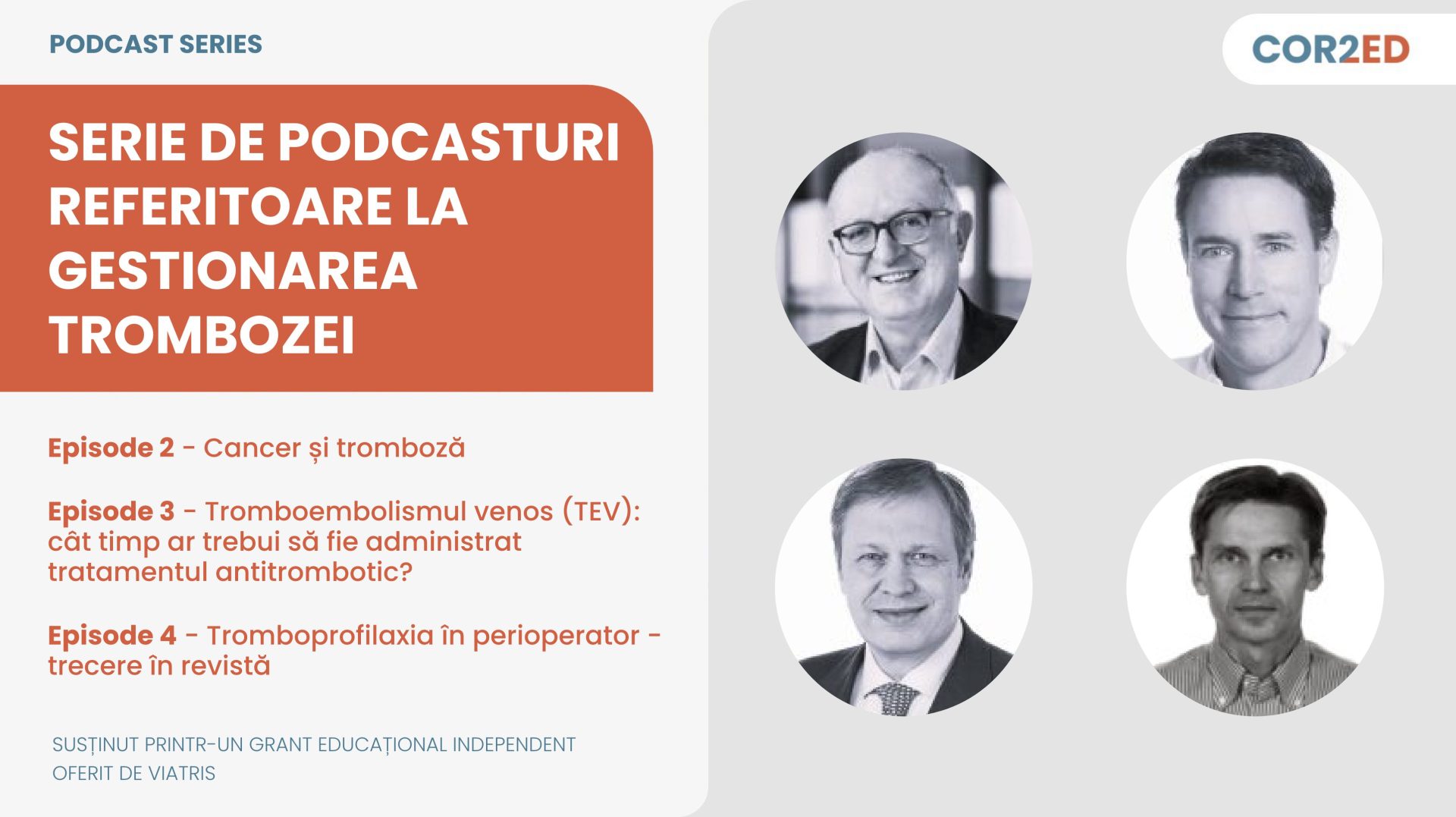
 Downloadable
Downloadable  28 MIN
28 MIN
 May 2025
May 2025 
